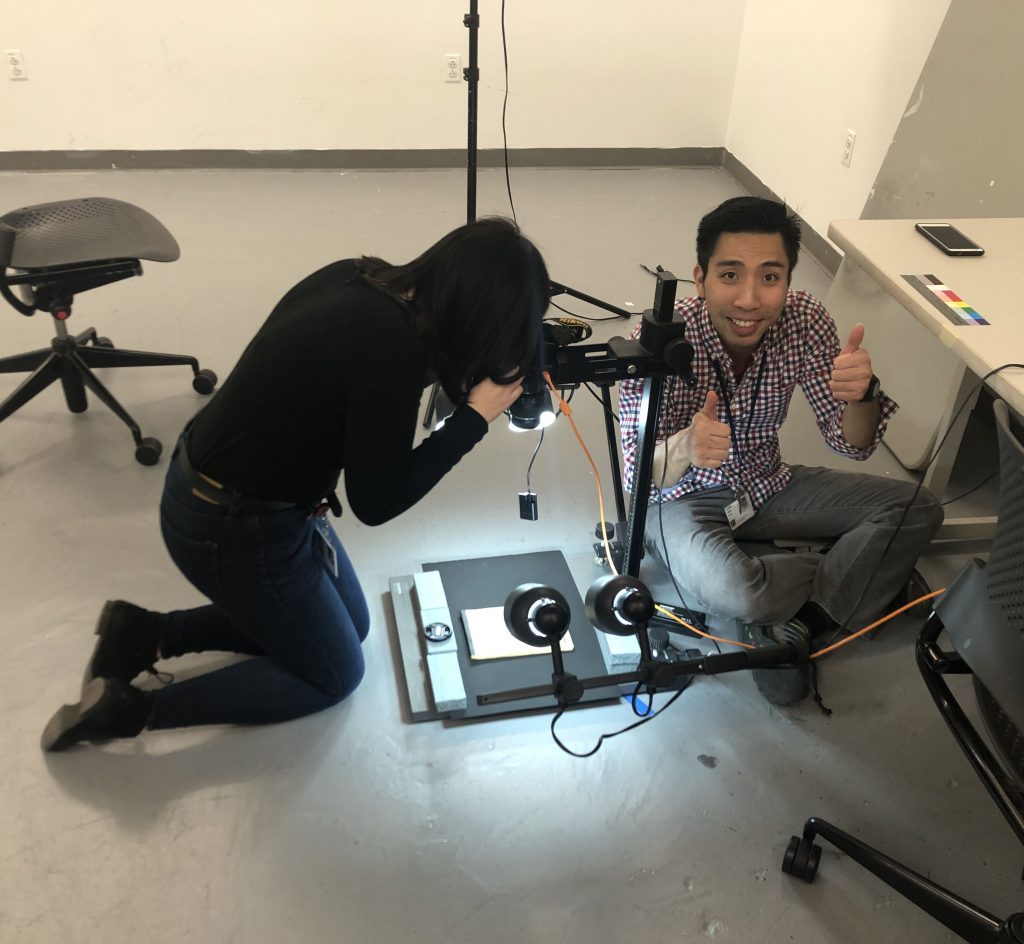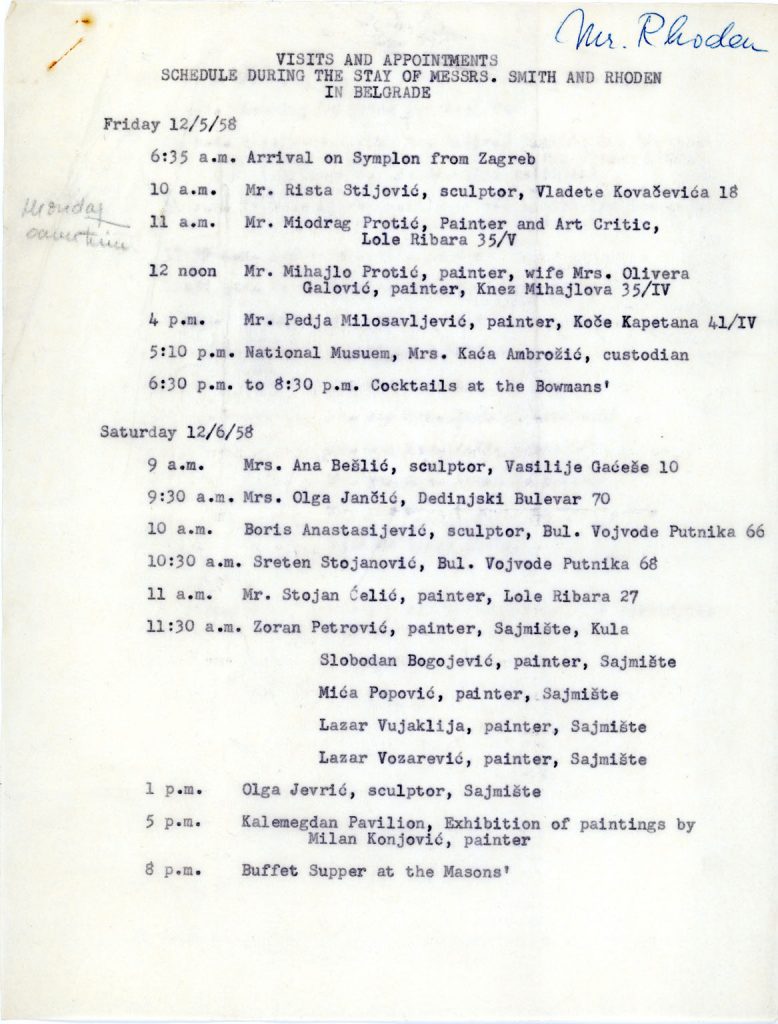Contributed by Kelin Baldridge, Project Archivist for the John Rhoden papers
Here in the Rhoden papers, we have been elbow-deep in the nitty-gritty work of digitization and cataloging. We are approaching the five thousand digitized objects mark and, as we are nearing this milestone, wanted to re-commence our regular posting.

What we accomplished:
- Finished digitizing all prioritized documents, photographs, and slides
- Photographed bound volumes such as sketchbooks and exhibition catalogs
Up next:
- Finish cataloging all digitized objects
- Scan all non-priority manuscripts
Thoughts:
We began the digitization and cataloging process by establishing digitization priorities. In our first pass, we digitized all documents with clear informational value – names, dates, processes, plans, prices, etc. – a criteria that depends more on our judgment as archivists than on hard and fast rules. We additionally decided to digitize all black and white photographs of John’s military service, exhibitions, commissions, travel, family and friends, and home and all color photographs of John’s commissions and exhibitions. Finally, we decided to scan all good-quality color slides from John’s travels. (Good-quality simply refers to anything that is not blurry or dark to the point of negating an informational or aesthetic value.)

As of this week, we have digitized all of the above items and have finished cataloging them. With this in mind, our next step is to return to the manuscripts and scan all of the remaining documents. The manuscripts are simultaneously the smallest and most informationally rich portion of the collection and, as such, I am extremely excited to be able to provide easy access to all of them. Providing access to the entirety of John’s documents ensures that the physical remnants of his story are presented in the most robust manner possible and that each document can be contextualized to the fullest extent.
On a different note, one thing I have learned as a project archivist is that hitting a numerical goal is daunting. It is easy to become fixed on the number and prioritize that goal over others (such as blogging). However, now that we are through the thick of it, I have learned not to become overwhelmed by numerical goals but rather to allow them to serve as a framework for planning a balanced project.
Up next, a post from Assistant Archivist Jahna about photographing John’s sketchbooks!
This project, Rediscovering John W. Rhoden: Processing, Cataloging, Rehousing, and Digitizing the John W. Rhoden papers, is funded in part by the National Endowment for the Humanities, a federal agency.
ABOUT THE NATIONAL ENDOWMENT FOR THE HUMANITIES
Created in 1965 as an independent federal agency, the National Endowment for the Humanities supports research and learning in history, literature, philosophy, and other areas of the humanities by funding selected, peer-reviewed proposals from around the nation. Additional information about the National Endowment for the Humanities and its grant programs is available at: www.neh.gov.